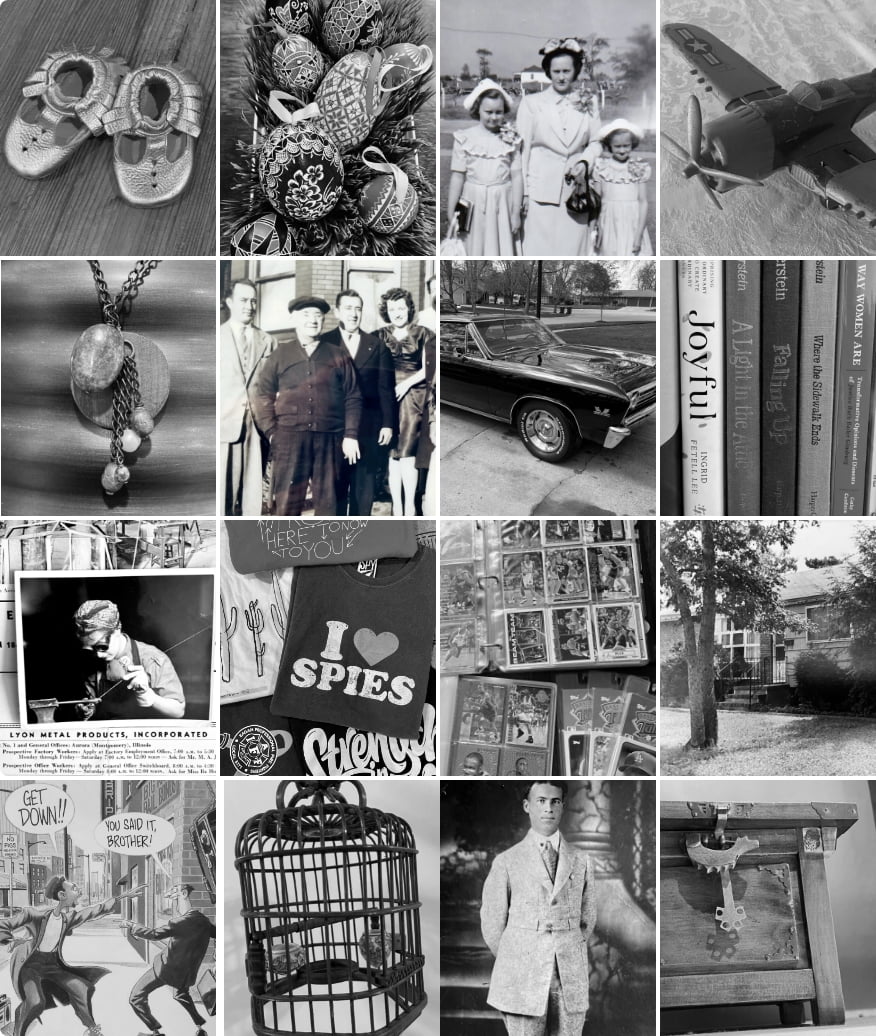Careful what you ask for. In his book “Stuffocation,” author James Wallman details how in the post-industrial revolution US economy of the 1920s and 1930s, there was too much of everything, everything produced by farmers to industrial machines. We overachieved! Rather than produce less, the goal became getting consumers to buy more, even if they had enough. Advertisers had to up their games.
The trick was how to get people to lose the “lasts a lifetime” expectation and develop a desire for the newest version, model, or edition that industry was now only too happy to churn out. The fashion industry already exemplified this and now the rest had to catch on, landfills be damned, and provide cheaper, disposable, fashionable everything.
Fast forward 100 years and the "buy more" concept has persisted and matured, leaving no industry untouched. Here are a few examples to get you thinking like the advertisers do.
GADGETS.
Millions regularly trade in their favorite gadget—whether a phone, tv, fitness tracker, or otherwise—for the next model the moment it’s released, waiting in line to ensure they are the earliest of adopters. And tech's just the obvious example.
COLORS!
Have you thought about why there are “colors of the year” and “of the season” that pop up in your feeds and inboxes, often with seasonally suggestive names, like “breezy blue?” All the companies fall in line with their similar version of the “it” blue of the season, until it’s suddenly a beautiful gem green and yet again you rethink your clothing and home decor choices.
DESIGN CONCEPTS.
Design concepts trend just like colors. Recently “glaze” has popped up on hot pink garments from Lulu Lemon and green frames from Framebridge. This is not to be outdone by “scalloped” edges on picture frames from Archival Methods, mirrors and tables from School House, and toilet paper from Charmin. Product and marketing experts know how to get modern buyers to buy.
MATCHING SETS AND COMPOSITIONS.
Here’s yet another reason to buy – sets. Whether that’s a matching clothing set or a gallery wall of frames, moving you to buy not one, not a set, but MORE all at once. I mean, the picture shows 10 frames make a gallery, so I guess I need one of each, right?
Maybe these tactics do not sway you. You have a certain style, and you stick to it. Timeless. Functional. You! What about ...
ENTICING DISCOUNTS.
... the sneaky “up to 30%” off offers? Have you fallen for those? You browse or click and nearly nothing you’re interested in is 30% off, just a tactically chosen few which you overlook as you accelerate through the checkout process because you are already there in the store or your credit card or other digital payment means is already available on your phone or laptop.
6 Strategies to Help You Muffle the Calls to Buy
In honor of Earth Day that was celebrated on Monday, and in recognition of our general philosophy here at Artifcts that you should stop and smell the roses more often when it comes to your ‘stuff’ to appreciate what you have and why you have it, we’ve curated some easy tactics you can use to halt more stuff from coming into your home.
1. Unsubscribe. (Yes, catalogs, too. Check out options). Have you heard of that movie from 80s, "See No Evil, Hear No Evil?" That's the idea. If you are not seeing those emails and notifications, you are so far ahead of the game. Worried you’ll miss a sale? Set a reminder to check back when you know they usually have sales. Or simply sign up again later if you truly miss seeing their emails.
2. Delete payment methods. Unless you are on a recurring payment plan that requires a purchase, delete and/or do not save any payment information anywhere. Make it inconvenient to make that purchase. You’ll have to get up out of your seat to get that credit card, giving you time to think again.
3. Work ahead for sales. You’re a deal hunter. Fabulous. So are we. Save items to your shopping cart weeks before that next big sale. In the US, big sales are like clockwork on major holidays. By preloading items to your cart, you have time to think on it. When you return weeks later you might discover that at least some of those items are not as “must have” as you first thought.
4. Visualize where it will go, where and when you will wear it. Maybe you love a beautiful, framed picture, a side table, a cool clock, a dazzling watch, or a “travels-beautifully” dress. Pause to think, where exactly will I hang this picture in my home? Where will this table fit? You already have a watch. Why do you need or want this one?
5. Keep savings goals front and center. Do you have debt to pay down? A big trip you’re dreaming about? What about ambitions for a lower stress summer with the kids in camps they’ll love? Keep photos of your goals around you. Track your savings each week. Or add to your savings each time you resist a purchase as a reward toward your goal, even if it’s only skipping that espresso. Whatever it takes for you, remember the thrill of that purchase might be short-lived compared to your still more thrilling goals.
6. Skip “{fill in the blank} math.” Here’s a recent example of this straight from our teenage daughters and their talk about “girl math.” Normally the swim tops and bottoms are individually $30 but there’s a buy one-get one sale. Dear daughter picked out a swim set and said, “Awesome, I have $30 more dollars to spend.” On something, anything, no idea what, but let’s go spend! Sigh.
_________________
We feel better already, reminding ourselves of these strategies. We're not turning over a minimalist leaf or shaming anyone for enjoying a bit of shopping. But we do hope your buying does not lessen anything else in your life, from enjoying your home to taking those trips of a lifetime you save for and remember always.
###
© 2024 Artifcts, Inc. All Rights Reserved.
















